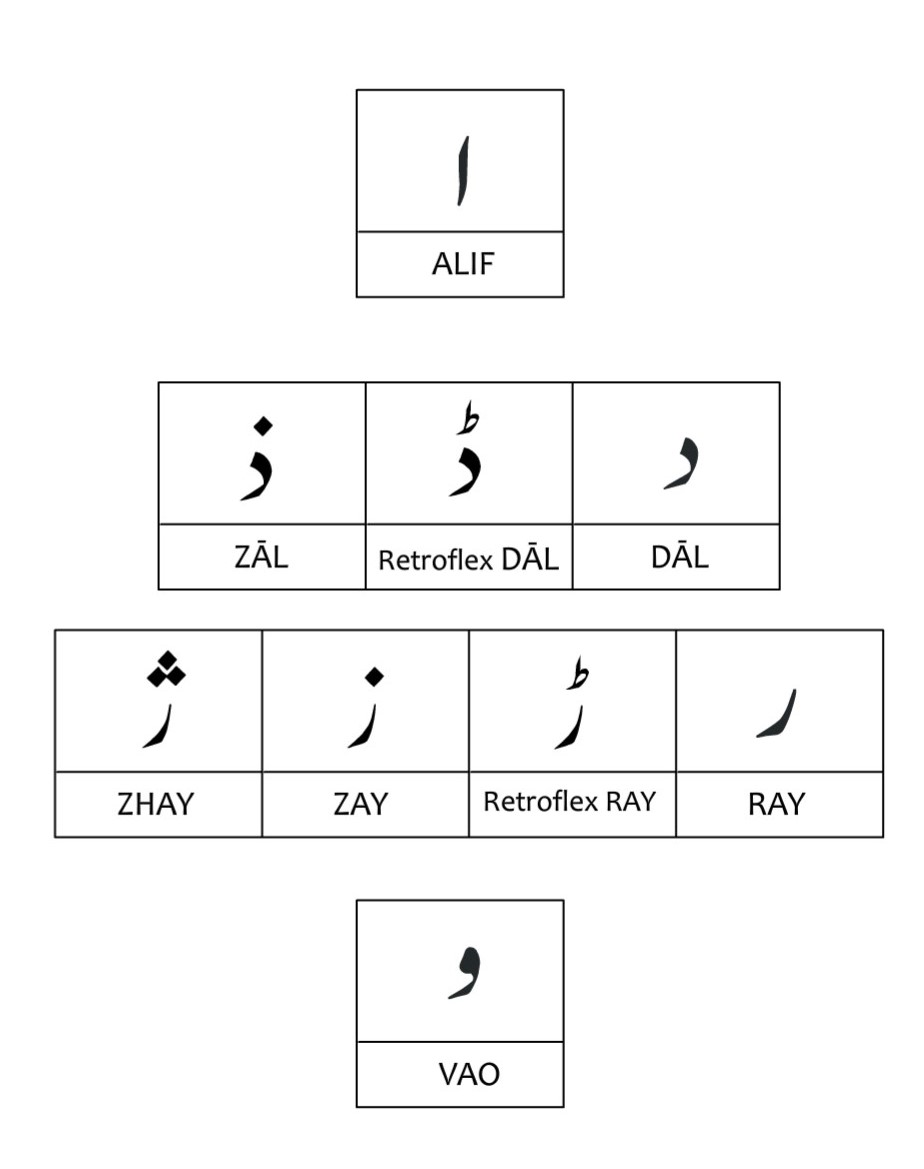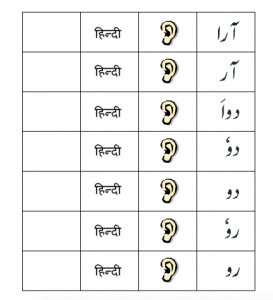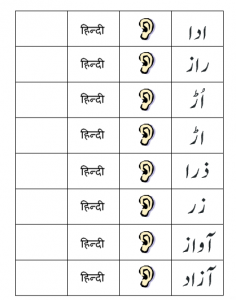Lesson 1
This lesson covers the following letters. Go to the alphabet chart and click on each of these letters. Read about its sounds, shapes, and connections. Then try the exercises listed.

Note 1. The letters in this lesson are called “breakers” because they break the cursive flow, even when they occur within a word.
That is, none of these letters can be connected with a following letter (although they can be connected with a preceding letter). Any letter following a breaker must be in its initial form or detached form. In this lesson, since we are dealing with only breakers, every letter will occur in its detached form. In Lesson Two, when we introduce some non-breakers, we will practice using the final (right-connected) form of the breakers.
Note 2. In this lesson, you will learn two different letters that have the same sound; ذ (ZAL) and ز (ZAY) both sound like the English “z”. In fact, as you will learn, there are several more Urdu letters that sound like “z”. How do you know which one to use? You must memorize which words are spelled with each letter. (These letters have different sounds in Arabic, but for Hindi-Urdu speakers they are pronounced the same). For now, use ز (ZAY) unless otherwise indicated.
Exercise 1
Copy the following Urdu words. Now read them aloud. After you have tried each word, click on the ear (insert icon w/audio on-click) to hear it. Did you read it correctly? For those who know Hindi, if you want to see how the word is written in Hindi, click on the “Hindi Hint” button.
Exercise 2
Click on each ear (insert icon w/audio on-click) button to hear a short Urdu phrase. Try to write the phrase in Urdu. To check your words, click on the eye (insert icon w/reveal on-click) button. For those who know Hindi: click on the “Hindi” button to see the phrase in Hindi. Try to transcribe the phrase from Hindi to Urdu.







